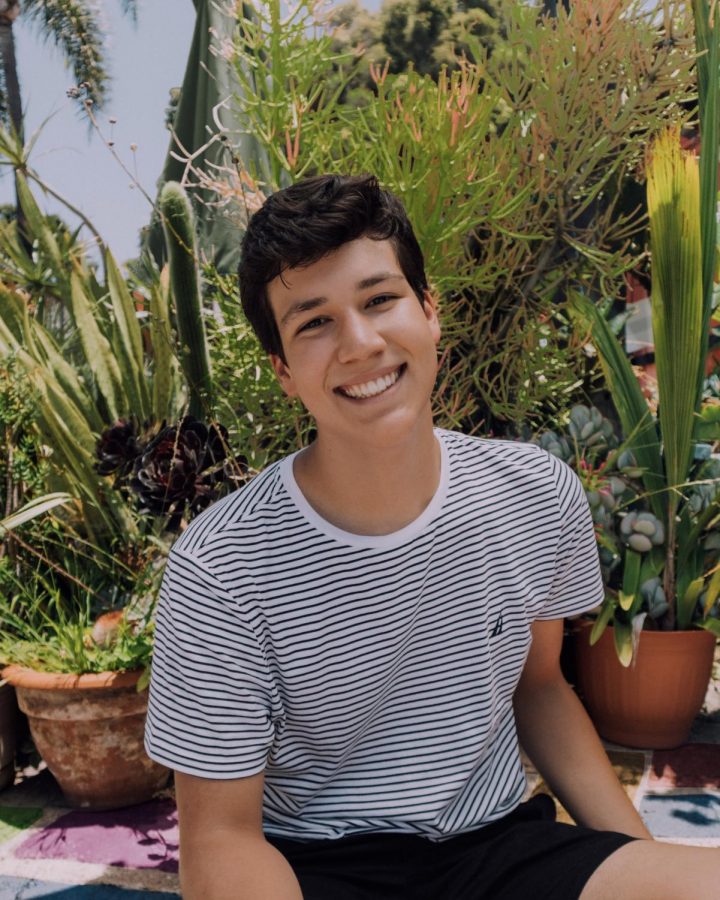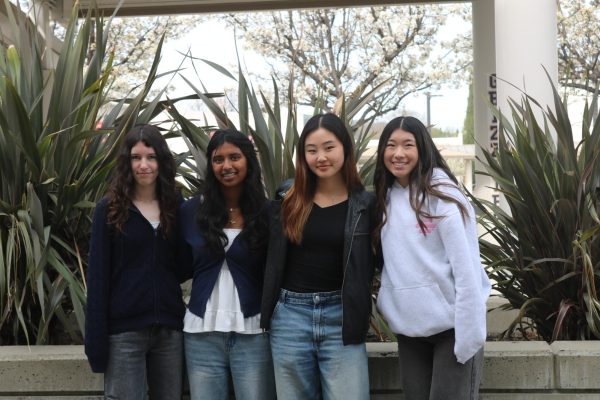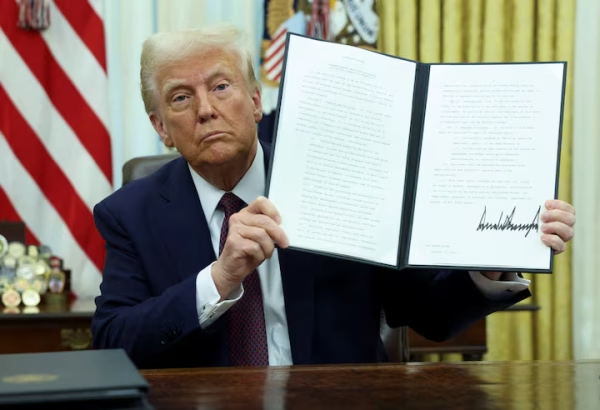SRV student who had COVID-19 petitions district to delay reopening
Senior Nic Prescott thinks schools should wait to let students back on campus after his challenging experience with the coronavirus last month
Photo courtesy of Nic Presscott
San Ramon Valley High senior Nic Prescott tested positive for COVID-19 on Oct. 19 and has since created the Compassionate Reopening petition, which calls for the reopening of San Ramon Valley Unified School District campuses only when the district can ensure the safety of everyone.
Feeling nothing out of the ordinary on Oct. 17, San Ramon Valley senior Nicolas Prescott went about his normal routine by going to work and grabbing a bite to eat.
In the early morning hours of Oct. 18, he experienced a 105-degree fever and severe shivering. The next day, Prescott tested positive for COVID-19.
Over the next week, Prescott experienced all the hallmark symptoms of COVID-19, from a loss of taste and smell to bone aches and massive congestion. He still tried to attend virtual school, but due to his ill state he laid in bed with his camera off.
“I did not feel up to go to school even with 103-104 degree fevers but I did start attending,” said Prescott, 17. “If it weren’t for online learning, I wouldn’t have been able to do that.”
Along with high fevers, Prescott suffered from hypothermia for two days as his body temperature dropped to around 94 degrees. Prescott also experienced coughing, physical pain, and dizziness, which kept him bed-ridden.
“I’ve had the flu, I’ve had tropical dengue virus,” Prescott said. “None of it compares to how incapacitated you feel [with COVID].”
Prescott was surprised to learn he contracted COVID-19 because he had been following all the CDC guidelines, such as wearing a mask, social distancing and limiting his exposure to the outside world. But what Prescott finds most interesting about his experience with COVID-19 was his state of health prior to contracting the virus.
“As a senior in high school, I don’t have any preexisting health conditions and I rarely ever get sick,” Prescott said. “It just goes to show you that nobody is really bulletproof.”
Prescott’s pain wasn’t limited to a physical aspect. COVID-19 was also damaging to his emotional health.
“I felt really sad and anxious,” Prescott said. “[I] ended up writing a post on my Instagram about the overwhelming feeling of guilt associated with being infected.”
Prescott’s experience with COVID-19 was key in inspiring the Compassionate Reopening petition, which he created on Oct. 21 and calls for the reopening of San Ramon Valley Unified School District campuses only when the district can ensure the safety of everyone.
The name was inspired by the feelings of compassion Prescott felt, especially for the teachers who would be forced to return to school during school reopening.
During a school board meeting on Oct. 27, the district decided to return to a hybrid learning schedule, effective Jan. 5. More detailed information about the hybrid model can be read a Nov. 9 article in The Californian or on the district website.
The petition calls for a delayed opening for the district instead of returning to school on Jan. 5 in order to ensure the safety of the students and staff. The group supports reopening, but they believe that reopening schools in less than two months is not the safest decision.
Prescott uses scientific data to back up his claims, including a Harvard study suggesting that hybrid learning can lead to an increase in COVID exposure and cases.
“Hybrid learning has a lot of free time on your free days that provide you with enough time to infect other people,” Prescott said.
He explained that one person who contracts COVID-19 exposes a certain amount of people to the virus, and those people expose other people which causes the infection of the virus to grow exponentially.
The petition is also focused on providing teachers with the same choice given to students and their parents. The district emailed on Nov. 6 the Declaration Form asking families to choose between remote and hybrid learning for the second semester. Teachers are not given this choice.
“It’s not that our teachers aren’t important, it’s just that we need to start somewhere,” Superintendent Dr. John Malloy said in a Nov. 4 press conference with The Californian.
If teachers with health problems want to opt-out of the hybrid model, they have to send a doctor’s note to the district human resources department. After reviewing the note and meeting with those teachers, the district may or may not grant requests to opt-out of hybrid learning.
Healthy teachers with at-risk family members may not be given as many options as teachers with health issues themselves.
While some Cal High teachers currently work at school, most chose to stay at home, according to a poll conducted by The Californian at the beginning of the school year.
“I can be as effective teaching from home as I would be at school,” science teacher Joanna Condon said.
Condon does not believe the overall learning of high school students would be significantly better in a hybrid setting due to a lack of labs and collaboration. But, she acknowledges that learning in a school environment can be beneficial to some students.
The main reason why Condon chooses to teach remotely is for the health and safety of her family.
“I have respiratory issues. I don’t want to bring it home and to my mom, she’s elderly,” Condon said. “I don’t want to sacrifice my life for one semester.”
Condon is also concerned about students returning right after winter break, a period usually filled with socialization, travel and out-of-town visits. With January falling right in the middle of cold and flu season, the chances of getting sick are also increased.
“Those two weeks [after winter break] will be the most contagious and most dangerous of the whole year,” Condon said.
Many parents share Condon’s concerns about flu season and hybrid learning overall, as shown by various comments on the moderated “SRVUSD parents interested in hybrid or distance learning models” Facebook group.
This Facebook group is one of many outlets that Prescott initially shared his petition with.
Prescott received a lot of support but also heard other concerns presented by parents, such as the high cost of online learning tools. But Prescott believes that the cost of online learning does not justify a return to school.
“Hybrid learning has the capacity to be just as expensive if not more,” Prescott said. “We’ll still be paying for all the amenities we have online, but on top of that we’ll be paying for the risk and the cost of bringing people back to school.”
Although the Compassionate Reopening petition is advocating for a delayed reopening, Prescott also understands those who have concerns about remote learning.
“Every family has different concerns,” Prescott said. “They are completely valid.”
Prescott appreciates all the support the petition has received, as well as the positive interactions he has had with some parents who have disagreed with him. While many parents were civil and supportive, a small proportion responded with negative backlash and disbelief about Prescott’s experiences with COVID-19.
“I received about 40-50 comments calling me a union rat or accusing me, saying that I’m a crisis actor…[and] paid by the teacher’s union,” Prescott said.
A crisis actor is someone who plays the victim role during tragic events in order to influence public opinion. This term was commonly used to downplay tragic events or as “evidence” that the events didn’t happen.
“Crisis actor” wasn’t the only type of insult that Prescott received on Facebook. Some messages on Facebook even accused him of being the president of the teachers union or a school board candidate.
Prescott found these attacks unnecessary, especially coming from parents.
“I recognize the loss and I feel the pain myself, but I’m not going to excuse adults acting this way,” Prescott said. “I don’t think it’s excusable for an adult with a developed frontal cortex to attack someone.”
Prescott hopes that community members can remain respectful toward each other, regardless of their opinions on hybrid and remote learning.
“It’s okay if we’re disagreeing. I hope we as a community can foster this civility,” Prescott said. “This will prove all the better for the way the reopening affects everybody.”
Despite backlash from a few parents, the Compassionate Reopening petition has gathered nearly 900 signatures. Prescott presented the petition, along with a public comment that is available on his petition’s page, to the district board of education on Oct. 27.
“The [Compassionate Reopening] petition represents a portion of our community that feels very strongly that we should stay remote and I respect that,” Malloy said. “I also respect the side that believes as long as we strictly adhere to safety strategies, it’s safe to come back.”
Malloy said the petition emphasized the importance of choice and that he was uncomfortable with restricting families to one option. He believes that the district can offer both a great hybrid program with strict protocols and a great continuation of the remote program.
“The only reason that we don’t go back on January 5th is if the county or the state told us we weren’t allowed to go back,” Malloy said.
But many students have mixed opinions about whether they would want to return to hybrid learning.
“I am not 100 percent sure if my parents are going to send me back,” senior Alicia Loney, who is Cal High’s ASB president, said on Nov. 3. “I think I’m going to but I would like to see more information given out about how in-person is going to work.”
Principal Megan Keefer emailed a letter detailing the reopening plan and provided a video showing the day-to-day life of hybrid students. Student safety protocols were clearly outlined by Keefer in the letter and by the district at its Oct. 27 school board meeting.
Despite this, Prescott still believes delaying the reopening of campuses is the safest for everyone.
“The CDC has expressed in the past that there isn’t really any precaution that matches up with not socializing,” Prescott said. “Even if you think that teachers and students won’t get infected and it won’t be severe, my story shows that that’s not true.”











